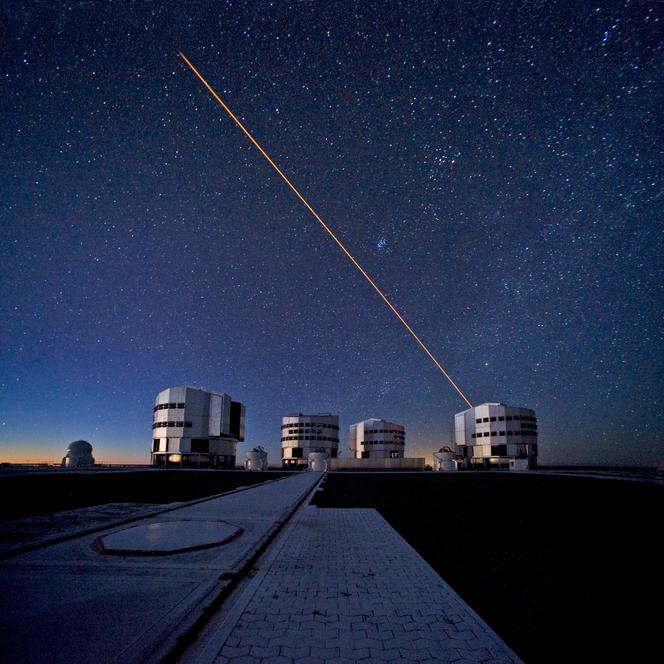


In mid-November, in La Residencia – the long building at over 2,400 meters of altitude in the middle of the Atacama desert (Chile), which houses the people who come to work on the Very Large Telescope (VLT) – Arthur Vigan was preparing for a few sleepless nights. Vigan, from the Marseille Astrophysics Laboratory, specializes not only in instrumentation but also in the detection and characterization of exoplanets. He was preparing to carry out the very first observations with a new instrument, HiRISE, which had been installed on one of the VLT's four 8.2-meter telescopes.
In reality, HiRISE is a "matchmaker": It couples the telescope's two main instruments, SPHERE and CRIRES+. Each has great attributes, but also a shortcoming. The first is for studying exoplanets through "direct imaging": Whereas the two main methods for detecting extrasolar planets simply measure the properties of their targets without ever seeing them, SPHERE is able to block out the blinding light of stars in order to photograph the planets that surround them. "But, with this instrument, we're fairly limited in terms of the detail we can obtain for the light spectrum of exoplanets," said Vigan. "Conversely, on the other side of the telescope, we have the CRIRES+ instrument, a very high-resolution spectrograph, but which is not designed to see faint objects close to stars."
The idea behind HiRISE is to combine the strengths of each instrument to overcome their respective limitations. This has required a bit of tinkering, linking the two machines with 80 meters of fiber-optic cable and sliding HiRISE into the little space left alongside SPHERE. This operation cost a relatively modest €1.5 million, essentially covered by a grant from the European Research Council. "Clearly, HiRISE is a research and development project," said Vigan. "It's a fairly frugal concept, making the most of existing instruments," he added.
Its first scientific campaign, this last November, comprised just three nights of observation, but many more are to come, as the agreement with the European Southern Observatory (ESO), which manages the VLT, spans three years. The researchers' objective is to target young giant planets around nearby stars, which are still emitting – in the infrared spectrum – the energy that they stored during their formation. "After a few hundred million years, planets radiate less and become more difficult to detect," said Vigan. Therefore, it would be impossible for an alien astronomer located some 30 light-years from Earth to spot Jupiter – despite its huge size – since it is over 4.5 billion years old.
You have 15% of this article left to read. The rest is for subscribers only.
